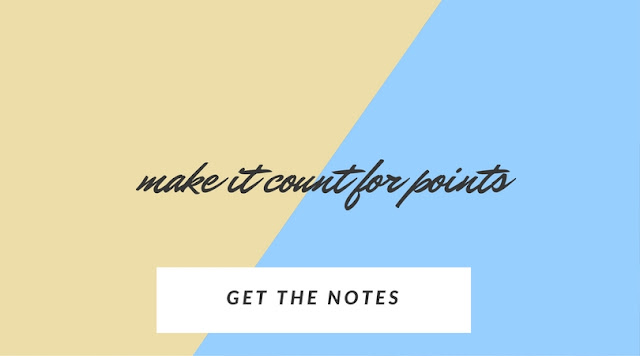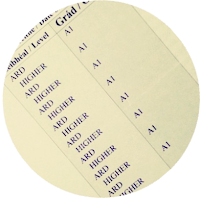2011 Higher Level Paper II
“Yeats can be a challenging poet to read, both in terms of style and subject matter.”
To what extent do you agree with this statement? Support your answer with suitable reference to the poetry on your course.
Having studied the poetry of W.B. Yeats, I constantly find myself uncovering new angles to his work. He is lyrical and combative, cynical and idealistic all at the same time. Some of the unique challenges associated with reading his poetry come from the context of the turbulent developments in the Irish society of his day. Yeats brought a patriotic and peaceful voice into our literature. He explores a wide spectrum of themes of universal importance. Questions of the passage of time, escaping one’s reality, peace and identifying with one’s country have challenged many a great mind. However, his imagery nicely offsets that challenge making it an appealing and memorable journey. I will illustrate my fascination with examples from The Lake Isle of Innisfree, The Wild Swans at Coole, September 1913, Easter 1916 and An Irish Airman foresees his Death.
Before we dive into the deep end of the existential, I can’t resist from discussing Yeats’ language. It is challenging only in the sense that I cannot stop reading into it and adoring his turn of phrase. From an imagery point of view, there is no poem quite like the sensuous Lake Isle Of Innisfree. It is anything but challenging to relate to the compulsion to escape. ‘The Lake Isle Of Innisfree’ is so powerful that it allows the reader to almost physically experience the transition from the ‘roadway’ and ‘pavements grey’ to the idillyc of Innisfree. His language is direct and effective, as well as being realistic and accessible for the reader: “And I shall have some peace there”. Yeats’ description is both visually and audibly stimulating: ‘There midnight’s all a glimmer, and noon a purple glow’. This image is accentuated with the use of alliteration, resonating again and again: ‘I hear lake water lapping with low sounds by the shore’. These images add a subtle lyrical atmosphere in the poem.
Yeats daydreams, albeit in a more regretful way, as he revisits The Wild Swans of Coole. Throughout this poem he addresses the transience of life, the effect that time has on us and thinks about the past. It is a challenging read. After all, we are all powerless against time. Yeats contemplates the swans and, in a self-loathing manner, attributes a perpetual youth to them: “their hearts have not grown old”. He describes them with admiration: they are ‘brilliant’ and ‘unwearied’. His feelings of despondency, so evident in this poem, is accentuated both through the contrast with the swans and his younger self when he ‘trod with a lighter tread’. Yeats shows off his masterful use of poetic manoeuvres: ‘scatter wheeling in great broken rings/ Upon their clamorous wings’, The onomatopoeia is accomplished with the perfect rhyme, rhythmic like “the bell beat of their wings”. The image of a majestic white swan taking off into the drizzly October twilight haunts the reader. This is the kind of challenge I could have more of!
Away from the lyrical and into the philosophical, September 1913 and Easter 1916 deal with more intense issues such as the role of individuals in war and Irish history. He introduces the challenging concept of a “terrible beauty” that reverberated throughout the XX century all the way to the centenary of the Easter Rising. September 1913 is an interesting record of Yeats’ contempt and disillusionment at the Irish society of his day. Their seeming hopelessness is resonates with each refrain: ‘Romantic Ireland’s dead and gone/It’s with O’Leary in the grave.’ The lowly image of someone so petty as to ‘fumble in a greasy till’ is not just disappointed, it is bitter. Yeats is probably alluding to the 1913 industrial dispute and these men exploiting their employees until they have “dried the marrow from the bone”. His sarcastic choice of words is so careful and so plain. It is as if he wouldn’t waste elevated imagery to describe this society. To him, this is where motley was worn, as he later admits, and where Ireland is some woman with yellow hair. This is not becoming of the heroes of the past: “Was it for this” he repeats. The rhythm of the poem gives a presence to a passionate speaker who is losing his breath with anger. We can only assume the speaker here is Yeats.
Yeats revisits his attitude to his contemporaries in Easter 1916. He admits he was wrong and openly admits his pettiness:
And thought before I had done
Of a mocking tale or a gibe
To please a companion
Around the fire at the club
He isn’t just doing a U turn on his previous views. He is challenged by the violence for the sake of peace, this “terrible beauty”. Needless to say, any reader is challenged by this. Yeats’ attitude to violence is also featured in Stares Nest by My Window and The Second Coming. It seems that there is no middle ground: either a world of the greedy, where all the good is “dead and gone” or of violent stony hearts and the “delirium of the brave”. Yeats remarks on the transience of it all, showing yet another layer of wisdom. He uses the natural flow of things to show that this too shall pass: “Minute by minute they change”. Albeit troubled by a stone, life goes on: ‘hens to moor-cocks call’, and we go ‘from cloud to tumbling cloud’. Yeats emphasises the power of the heroes of 1916 and their insignificance in the face of nature and eternity. Such depth in Yeats’ poetry reveals that he is not a closed minded nationalist or a lyrical hedonist, but he really does challenge us to see another dimension with him.
Similarly, An Irish Airman Foresees his Death discusses violence and its purpose. Yeats speaks as Major Gregory and considers the validation and sense of the belonging that the ‘cheering crowds’ and allegiance to ‘public men’ could bring an airman. Once again, Yeats is all about the present moment. This time, he doesn’t escape to the dreamy Innisfree, but faces the harsh truth behind violence: the thrill of it, “a lonely impulse of delight”. The choice of words here is so precise. Challenging to assemble, but so easy to feel, this image haunts. The sensation of disordered joy is created as Yeats invokes dizziness with his depiction of a ‘tumult in the clouds’.
Yeats is a complex poet. I really think there is a dimension to his poetry beyond what most of us immediately see. Yeats takes us on a journey through a series of moments where we feel we are impartial observers of nature and time. His poetry is a meditation on the meaning and value of life: that of ordinary people and of combatants, regardless of their cause. Harsh and judgmental at times, he manages to always zone on in on the most important aspect. Yeats challenges us and reminds us of universal values.
Consider this in terms of the marking scheme, where examiners were directed to reward reference to the following:
– allusions/imagery make Yeats’s philosophical poetry demanding
– conversational style illuminates universal themes – beauty, nature, love
– distinctive style explores abstract concepts of mortality, art, transience
– personal approach to Irish politics is accessible/challenging
– readers engaged by rhetoric, symbols, contrasts, dramatic language
You may also like:
|
Leaving Cert English Sample Essay and Notes
|



Thanks so much for this
This is fantastic. Thanks!